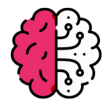Riddles for high school students aren’t just a fun way to keep students on their toes when having a little fun in class. They’re also a great—if sneaky—way of getting students to think critically and rceatively about the logic, narrative, and language of a riddle while also working on comprehension and problem-solving skills.
Whether folded into warm-ups at the beginning of a lesson, icebreakers in a group activity, or challenges in a study break, riddles offer teenagers the pleasure of finding—or even building—patterns from language, logic, even math, in an atmosphere that feels like play instead of pressure. And in the digital age of escalating distractions and shrunken attention spans, riddles offer a low-fuss, high-results way to keep young minds both sharp and open.
Riddles Are a Convenient Tool for High School Students
Promote Critical Thinking and Logic
Puzzles often rely on lateral thinking—thinking around the corner, if you will. High school is the perfect time to acquire this skill, as students will be facing more sophisticated material, and more real-life choices. Riddles teach your brain to review inferences, compare and contrast quickly, and to critically analyze both inferences and comparisons to work through solutions.
Improve Language and Comprehension Skills
A lot of riddles for high schoolers include puns, metaphors, or some kind of double meaning. These linguistic struggles can reinforce vocabulary and interpretational abilities. They also provide a useful way for students to learn the subtleties of language—an important asset in literature and debate as well as in essay writing.
Encourage Collaboration and Teamwork
Riddles are excellent group activities. Solved in twos, small groups, or as a class, they encourage discussion, not to mention respectful disagreement, and collaborative thinking. This makes riddles perfect for competition, a warm-up activity, and peer-led society.
Reduce Stress While Learning
With more academic demands, greater social pressures, and less time, students do best with engaging activities where laughter while learning is encouraged! Figuring out riddles gives them a refreshing break from rote memorization and testing, while also exercising their brain in playful ways.
Types of Riddles for High School Students
Classic Logic Riddles
It is reason and deduction that riddles examine. Frequently, they are used in math clubs and logic classes to help develop the critical-thinking muscle.
Example:
Without a mouth to speak, without ears to hear. I am without a body but awaken with the wind. What am I?
Answer: An echo.
Wordplay and Pun Riddles
Puns foster word play and also can aid in teaching students to appreciate words that have multiple meanings.
Example:
Why is your nose not 12 inches long?
Answer: Because then it would be a foot.
Read ALso: Riddles for Teens
Math-Based Riddles
Ideal for kids who love numbers and riddles, math riddles encourage young readers to build mental math, calculation, and logical reasoning skills.
Example:
What are 3 numbers which, when added, give the same sum as when multiplied?
Answer: 1, 2, and 3.
Lateral Thinking Riddles
The latter involves solving problems creatively, while looking beyond their immediate parameters. They’re great for brain teasers—or why not philosophical considerations.
Example:
A man pushes his car to a hotel and informs the owner that he’s bankrupt. Why?
Answer: He’s playing Monopoly.
Read Also: Riddles for Middle Schoolers
Visual and Spatial Riddles
You’ll see these mostly in pictures in my post, but you can also describe them to your students, and one of your students must then use spatial reasoning skills (or spatial skills) to visualize what you’re describing.
Example:
You see a boat filled with people, yet there isn’t a single person on the boat. How?
Answer: Everyone is married.

Using Riddles in the High School Classroom
English and Language Arts
Introduce poetry, symbols, and figurative language through riddles. Explain that jokes, like double meanings and puns, can create humorous writing or can be confusing. Have students compose their own riddles using vocabulary lists.
Mathematics
Open or close your math class with a math riddle. It’s a fun way to get into the math and logic of things. You also could have students write math riddles for one another based on algebra, geometry, or probability ideas.
Science
Aid scientific thought with biology, chemistry, or physics riddles. E.g. questionnaire about cells, atoms, forces in riddle form.
Example:
Myself, I am comprised of protons, neutrons, and electrons, and in my absence, all would be vacant. What am I?
Answer: An atom.
Social Studies and History
Riddles can even be about historical events or people. Come up with riddles that help students guess a well-known leader, battle, or invention by giving them clues.
Example:
I have crossed the Delaware and I was the First one to become President. Who am I?
Answer: George Washington.
Read Also: Tricky Riddles with Answers
Benefits Beyond the Classroom
Improved Mental Agility
Frequent exposure to riddles trains students to respond faster to surprise questions—a crucial skill in interviews, debates, and on standardized tests.
Greater Confidence
When students can answer complex riddles, they feel a sense of satisfaction. It’s a huge confidence lift for learners who are more timid or reluctant as well.
Cultural and Social Connection
Riddles appear across cultures. Riddles can also be contributed from outside the country or from other languages, making it possible for students to experience a different world view while interacting with jokes and logical thinking.
Cool Riddles for High School Pupils
Below is a selection of fun and challenging riddles for high school students:
- What has keys but can’t open locks?
Answer: A piano. - The more you get, the more you leave behind. What am I?
Answer: Footsteps. - I have cities, but no houses. I have no trees, but I have mountains. I have water, but no fish. What am I?
Answer: A map. - What may be seen in the middle of March and April that can not be seen at the beginning or end of either month?
Answer: The letter “R”. - What can go around the world but stay in a corner?
Answer: A stamp. - What happens one time in a minute, twice in a moment, but never in a thousand years?
Answer: The letter “M”. - What becomes wetter the more it dries?
Answer: A towel. - If you run in a race and you pass the second person, what place do you finish in?
Answer: Second place.

Writing Your Own Riddles for High School Kids
Getting students to write their own riddles will also enable them to practice synthesis and hone their creative skills. Provide a structure:
- Choose a subject or concept
- Consider the characteristics of it or what it is used for
- Come up with a wrong but true hint
- Finish with a riddle format, either punchy or poetic
Example:
Subject: Fire
Riddle: Give me food, and I will live; give me water, and I will die. What am I?
Answer: Fire
Have students share their riddles in groups or as a part of a creative piece. You could even start a classroom “Riddle Wall,” or a digital riddle board in something like Padlet or Google Jamboard.
Read Also: Hard Riddles with Answers
Frequently Asked Questions on Riddles for High School Students
Q1: What is it about a riddle that achieves the bar for high school students?
A: High-school riddles should be challenging and clear. They should challenge children to think critically but not be too obscure or immature. Theming with school subjects or current events can also help make books more relatable.
Q2: Can riddles enhance school performance?
A: Yes. Riddles develop cognitive functions such as cognitive flexibility, language skills, and reasoning (among others), and they can be easily integrated into academic subjects such as English, math, and science.
Q3: How frequently should teachers incorporate riddles into classroom practice?
A: One or two riddles, even over the course of a week, can be significant. Incorporate them as warm-ups, brain breaks, or closers. Too many conundrums in succession can lose engagement altogether, so they’re best used sparingly.
Q4: Should students with learning differences have access to riddles?
A: Absolutely. Puzzles can offer alternative routes to knowledge. Students who struggle with traditional modes of expression may excel with verbal or graphic problem solving.
Q5: Can assessing riddles be acceptable?
A: Although riddles are best for formative and creative learning, you can also use them for assessments to assess understanding skills, inference skills, and application of learned material in a fun way.
Q6: Do you have any digital tools that you would suggest for sharing riddles with students?
A: Yes. Google Forms, Kahoot!, Quizizz, and Padlet can be used to pose riddles interactively and record responses.
Summary: Keep Your Mind Alive with High School Riddles
In an age of information overload, high school riddles bring a unique blend of learning and entertainment to the whirlpool of knowledge that is already their world. They excite the imagination, question assumptions, and empower teens to reinforce the very skills they require as students and individuals. Riddles can be used in various educational and entertaining ways to turn any classroom into a battle of wits!
So lead your students to creative thinking, clear communication, and a confident ability to solve problems—one riddle at a time.



